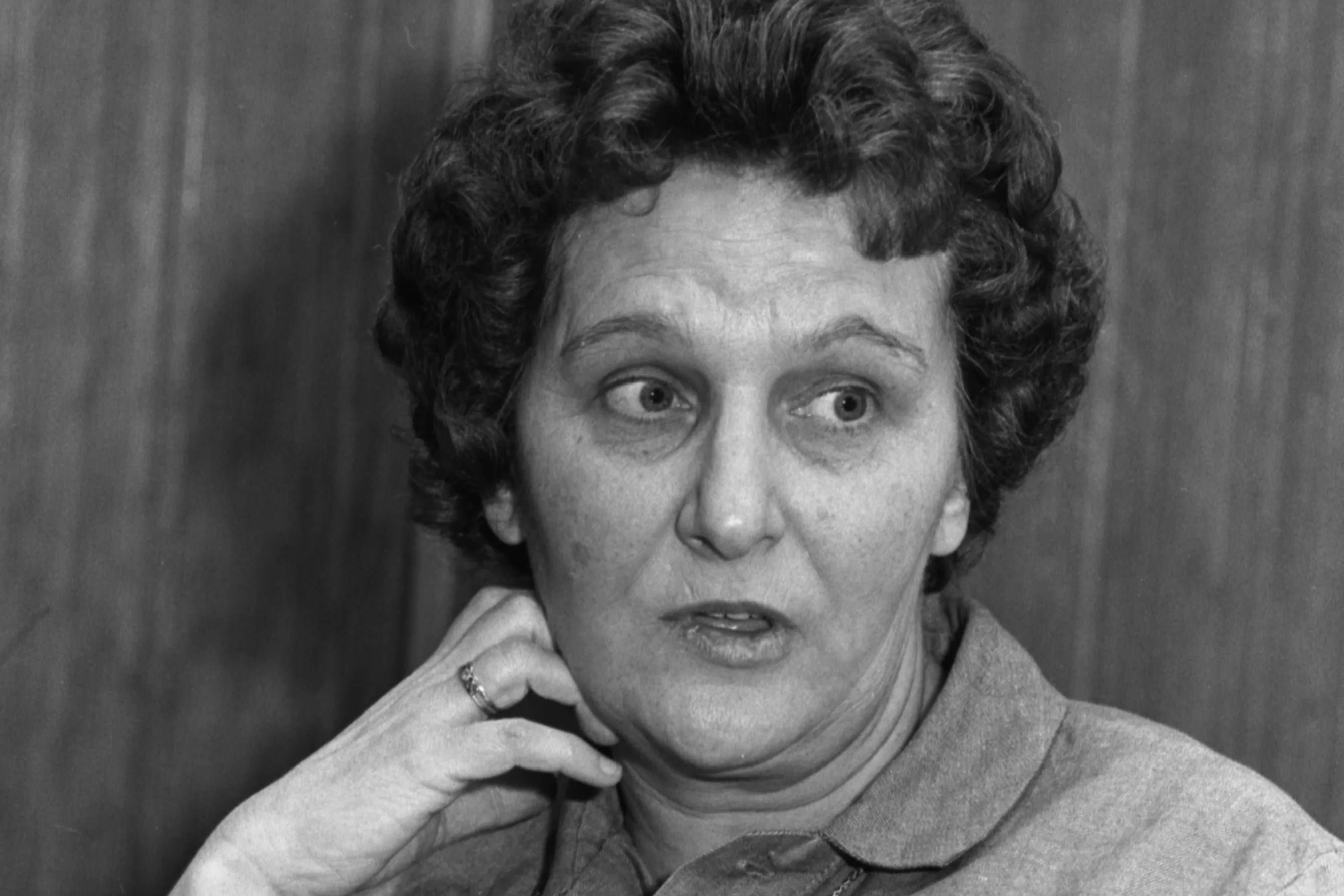
Who was Velma Barfield? Velma Barfield, born in 1932, became infamous as the first woman executed in the United States after the reinstatement of the death penalty in 1976. Why is she significant? Her case drew national attention due to her crimes and the debate over capital punishment. Barfield, a seemingly ordinary grandmother, was convicted of poisoning several people, including her own mother. What makes her story unique? Her transformation from a trusted caregiver to a convicted murderer shocked many. Why should you care? Understanding her life and crimes offers insight into the complexities of human behavior and the justice system. Ready to learn more? Let’s dive into 35 intriguing facts about Velma Barfield that will leave you questioning everything you thought you knew about this notorious figure.
Key Takeaways:
- Velma Barfield's life and crimes serve as a cautionary tale about the hidden darkness in seemingly ordinary individuals, highlighting the far-reaching consequences of criminal actions.
- Her story sparks debate and reflection on the nature of evil, the pursuit of justice, and the potential for rehabilitation and redemption, showcasing the complexities of human nature.
Velma Barfield: A Notorious Figure
Velma Barfield, an infamous name in criminal history, left a chilling legacy. Her story is filled with shocking twists and turns. Here are some intriguing facts about her life and crimes.
-
Velma Barfield was born on October 29, 1932, in South Carolina. Her early years were marked by poverty and hardship.
-
She was the first woman in the United States to be executed after the reinstatement of the death penalty in 1976.
-
Barfield's method of murder was poisoning. She used arsenic to kill her victims, which included family members and acquaintances.
-
Her first known victim was her own mother, Lillian Bullard, who died in 1974. Initially, her death was attributed to natural causes.
-
Velma's second husband, Jennings Barfield, also fell victim to her poisoning in 1971. His death was similarly misattributed to heart complications.
The Crimes Unfold
As Velma's crimes came to light, the details became even more disturbing. Her ability to evade suspicion for so long is both fascinating and terrifying.
-
In 1976, she poisoned her boyfriend, Stuart Taylor, which led to her eventual arrest. His death raised suspicions, prompting an investigation.
-
During the investigation, authorities exhumed the bodies of her previous victims, discovering traces of arsenic.
-
Velma Barfield confessed to the murders, claiming she poisoned her victims to prevent them from discovering her thefts.
-
She was convicted of first-degree murder for the death of Stuart Taylor in 1978.
-
Barfield's trial garnered significant media attention, making her a notorious figure in American criminal history.
Life Behind Bars
Velma's time in prison was marked by a transformation that surprised many. Her behavior and actions during incarceration were starkly different from her life outside.
-
While on death row, Velma became a devout Christian, often leading Bible studies and prayer groups.
-
She expressed remorse for her actions, seeking forgiveness from the families of her victims.
-
Barfield's case became a focal point for anti-death penalty advocates, who argued that her religious conversion and good behavior should spare her life.
-
Despite numerous appeals and petitions for clemency, her execution date was set for November 2, 1984.
-
Velma Barfield was executed by lethal injection at Central Prison in Raleigh, North Carolina. She was 52 years old.
The Aftermath
The impact of Velma Barfield's crimes and execution left a lasting impression on society. Her case continues to be studied and discussed.
-
Her execution was the first of a woman in the United States in 22 years, drawing widespread attention.
-
Barfield's story has been the subject of books, documentaries, and television shows, highlighting the complexities of her life and crimes.
-
Some view her as a cold-blooded killer, while others see her as a tragic figure shaped by a difficult life.
-
The debate over her execution reignited discussions about the death penalty, particularly concerning female offenders.
-
Velma Barfield's case remains a significant example of how personal turmoil and criminal behavior can intertwine.
Psychological Insights
Understanding Velma Barfield's psyche provides a deeper look into what drove her to commit such heinous acts.
-
Psychologists have studied her case to understand the motivations behind her crimes, often linking them to her troubled upbringing.
-
Barfield's history of substance abuse, including prescription drugs, may have played a role in her criminal behavior.
-
Her actions have been analyzed in the context of Munchausen syndrome by proxy, where caregivers harm others to gain attention or sympathy.
-
Velma's ability to manipulate those around her, including medical professionals, showcased her cunning nature.
-
The duality of her personality—caring nurse and cold-blooded killer—continues to intrigue criminologists and psychologists alike.
Legacy and Lessons
Velma Barfield's life and crimes offer important lessons about human behavior, justice, and the complexities of the criminal mind.
-
Her case underscores the importance of thorough investigations in cases of sudden or unexplained deaths.
-
The role of mental health in criminal behavior is highlighted by her actions and subsequent psychological evaluations.
-
Barfield's story serves as a cautionary tale about the potential for hidden darkness in seemingly ordinary individuals.
-
The impact of her crimes on the victims' families is a stark reminder of the far-reaching consequences of criminal actions.
-
Velma Barfield's execution remains a pivotal moment in the history of the death penalty in the United States.
Final Thoughts
Velma Barfield's story is a chilling reminder of the complexities of human nature and the dark paths some individuals may take.
-
Her life has been the subject of numerous academic studies, exploring the intersection of crime, psychology, and justice.
-
Barfield's case has influenced policies and procedures in the investigation of suspicious deaths.
-
The media coverage of her trial and execution highlighted the role of public opinion in the criminal justice system.
-
Velma's transformation in prison raises questions about the potential for rehabilitation and redemption.
-
Her legacy continues to provoke debate and reflection on the nature of evil and the pursuit of justice.
Final Thoughts on Velma Barfield
Velma Barfield's story is a chilling reminder of how complex human nature can be. Known as the "Death Row Granny," she was convicted of multiple murders, using arsenic to poison her victims. Her case drew significant media attention, partly because she was the first woman executed in the United States after the reinstatement of the death penalty in 1976. Despite her crimes, Barfield's life also highlighted issues like substance abuse and mental health, which played roles in her actions. Her story serves as a stark example of how personal struggles can lead to devastating consequences. Understanding her life and crimes offers valuable insights into the darker aspects of human behavior. While her actions were unforgivable, they also remind us of the importance of addressing underlying issues before they escalate into something far more tragic.
Frequently Asked Questions
Was this page helpful?
Our commitment to delivering trustworthy and engaging content is at the heart of what we do. Each fact on our site is contributed by real users like you, bringing a wealth of diverse insights and information. To ensure the highest standards of accuracy and reliability, our dedicated editors meticulously review each submission. This process guarantees that the facts we share are not only fascinating but also credible. Trust in our commitment to quality and authenticity as you explore and learn with us.


